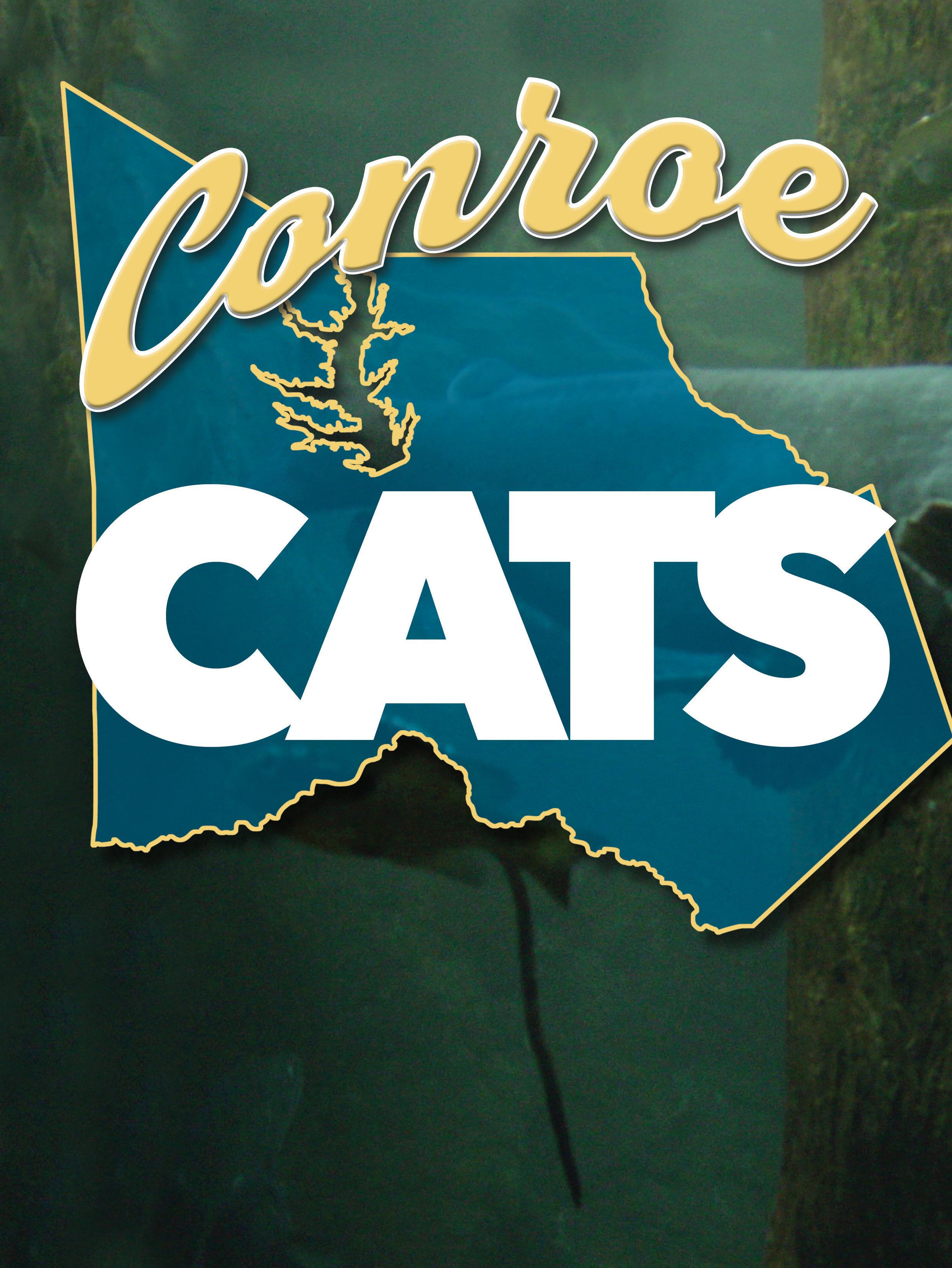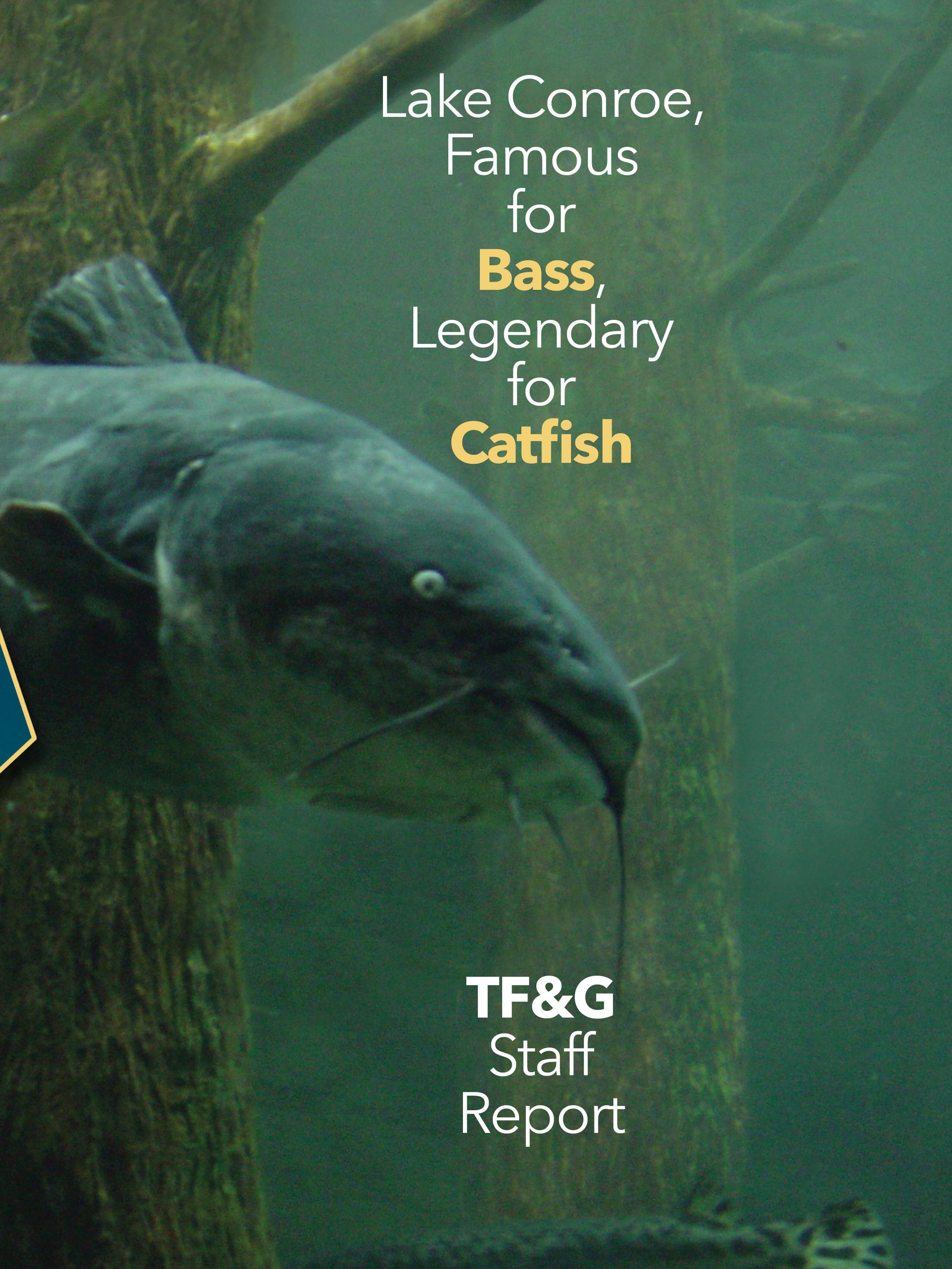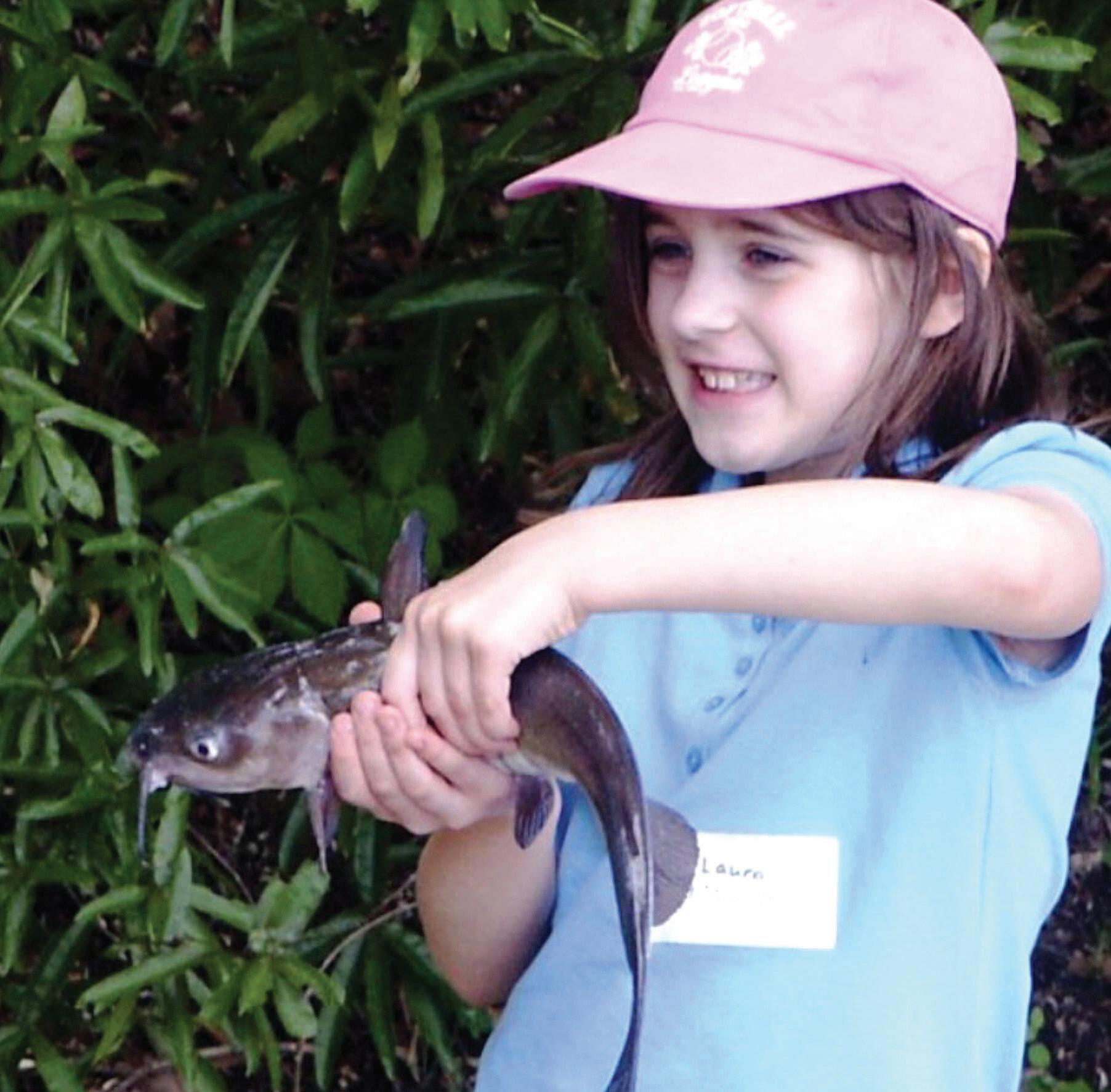
11 minute read
Bare Bones Hunting



by LOU MARULLO :: TF&G Hunting Editor
Let Turkey Season Begin
IT WAS PRE-DAWN. IT WAS STILL dark, and it was opening day of turkey season. e cool morning air surrounded me as I sat against a tree on the edge of a green eld.
Last night the gobblers sounded o as they ew to their nearby roost. I sat in anticipation of the turkey serenade as the dark night sky slowly turned into morning light. I was not disappointed. All around me, the toms gobbled as they began to wake.
Let the Turkey season begin!
I LOVE this time of year. Winter is now a memory and spring has sprung! As a ma er of fact, I am not sure what I like more—deer hunting or turkey hunting.
Don’t get me wrong, I love being perched up in a tree stand waiting for the whitetail deer I saw on my camera. But turkey hunting is totally di erent. You are not hunting the turkey; he is hunting you.
You sit still, either in a blind or against a tree and try to sound like a hen that is ready for action! Using the call of your choosing, you get the most seductive hen turkey sounds you can make and try to drive that gobbler wild.
Many turkey hunters out there make the mistake of calling too much. Number one, that just is not natural and number two, by calling too much, the tom will stop gobbling and that will frustrate the hunter.
Chances are, the hunter will get up and move thinking the gobbler moved on when in fact, he is actually coming right to you without making a sound. Busted!
If you call and immediately hear a response from a tom, then he knows right where you are. He will gobble every once in a while, to let you know where he is, and the game begins. It is natural for the hen to go to the sound of the gobbler, but as hunters, we try to turn things around and go against what is natural. We want that bird to come closer and closer to us until he is in range. Sounds pre y simple doesn’t it? I hate to disappoint you, but these birds are pre y smart and more than likely you will go home empty handed.
When I go a er a bird, I have a sequence of calls that seem to work. Not all the time, but I have called in a few in my day. When Chester was with me in a blind, he got to witness my techniques. Sometimes it was hard not to laugh. Let me explain. e rst call I make is a very so tree call and I wait until I can see my sights before I start. If a gobbler answers you right away, get ready he is coming in and coming in fast. If there is no response, then I start to make so hen clucks as if I am just waking up and getting ready to y down.
I make these calls and cup my mouth in di erent directions to simulate more than one hen. is next step in my bag of tricks really caught Chester o guard, and we had to cover our mouths so we would not laugh out loud.
I want to sound like a bird ying o the roost. I take my hat and ap it over my leg as fast as I can and gradually slow down. I can tell you; this REALLY sounds like the wings of a bird.
I also add a cackle to my scenario and cup my mouth as I turn my head. Any gobbler listening might think I ew down in a certain direction. Of course, that direction was right to where my decoys are set up.
A er my cackling stops, I wait about 10 seconds and then do a so yelp as if to let any birds in the area know that all is well and come on in and join the party! I nish my charade by scratching up some leaves to simulate a hen looking for food. e only other call I make is a yelp every 20 minutes or so. Once a gobbler responds to my calls, I quiet right down. If he is alone and searching for a hen, then he will come hunting for you. However, if he already has hens with him, he will stay with the hens. Most of the time, the hens will lead him away from you. If he is alone, he will gobble, waiting for you to come to him.
Do not answer him every time he gobbles. I know you want to but show some restraint. He will soon think you have walked o and he will come looking.
As a ma er of fact, if I hear a gobbler and he hangs up in the eld and will not come any closer, I will so ly yelp and turn my head away from the bird, so he thinks the hen has no interest. is will drive him crazy.
He may double or triple gobble. Don’t answer him. Make him come looking for you. Occasionally, a smart old gobbler will refuse to come any closer and will just gobble and strut back and forth until he just walks away. He has seen this movie before and already knows the ending. Oh well, that is why they call it hunting and not shopping.
As I sat with my back against a tree, the gobbling stopped. I waited and waited and waited some more. I would not make a sound and I would not move at all. at gobbler was around somewhere.
Suddenly, without any notice at all, I heard footsteps right behind me—I mean RIGHT behind me. e tom was looking at my decoys in the eld in front of me but would not move another step.
It seemed like forever when nally, he made his move. While he stood there less than three feet from my position, his neck stretched out. He gobbled so loud it startled me, and I jumped a li le. All I heard were the footsteps of a turkey running o .
It was a great hunt—no bird, but a great hunt.
Have fun and hunt safe.
Email Lou Marullo at ContactUs@fi shgame.com
LAKE CONROE IS synonymous with catfish.
Yes, hosting events like the Bassmaster Classic and Toyota Texas Bass Classic have put the spotlight on its super-sized, lunker largemouths.
The lake is great for hybrid stripers and crappie, but local anglers know that if they want a mess of catfish to eat or to catch a rod-bending trophy cat, Lake Conroe is the place to go.
Catfish Species & Records
Lake Conroe has viable populations of all three of the main catfish species of Texas and the rod and reel records as recorded by the Texas Parks & Wildlife Department (TPWD) are impressive.
The lake record channel catfish weighed a whopping 18.5 pounds and was caught by Jody Baughman in 2011. The record blue came in 2019 on gizzard shad and weighed 67 pounds. The lucky angler was Morris Taymon.

Lake Conroe, in north Montgomery County, is home to some huge blue catfi sh.

Lake Conroe: Getting on the Water
THE NATIONAL FOREST SERVICE PROVIDES TWO PAVED PUBlic boat ramps and a small boat launch at the Stubblefi eld Lake picnic area and campground. The service charges a fee for use of the paved ramps. Regular visitors can purchase an annual pass.
Visit the Forest Service website for fees and other information. Privately owned marinas also offer boat launch facilities for a fee. For details, choose a point on the map or a name in the chart below.
STUBBLEFIELD LAKE • Located in the Sam Houston National Forest. From the Lake Conroe bridge on FM 1375 travel west approximately for miles, turn right on Stubblefi eld Lake Road, and go about fi ve miles to the boat ramp. • Dirt ramp for small boats only • No fee for boat launch; day use fee for campground and picnic area • Open all year • Operated by the National Forest Service (936) 344-6205
CAGLE RECREATION AREA • Located in the Sam Houston National Forest. From the Lake Conroe bridge on FM 1375 travel east approximately one mile and turn right at the boat ramp sign. • Two-lane concrete ramp, accommodates all boat types • Fee required • Open all year • Operated by the National Forest Service (936) 344-6205
STOW-A-WAY MARINA • From Willis, go north on IH 45 approximately two miles. Exit Calvary Road, turn west and travel approximately fi ve miles to marina on right. • Three-lane concrete ramp accommodates all boat types. • Fee required • Open all year • Privately operated (936) 856-4531
SCOTT’S RIDGE • From the FM 1097 bridge, go west approximately 1.5 miles
Flatheads roam the lake as well and way back in 1990, Jimmie Lee Johnson bagged an absolutely monstrous 86-pounder.
But there’s more.
Looking into the all-tackle record which would include trotlines, you see the blue cat sh all-time record is an amazing 99 pounds caught by angler Joe Lynch.
Channel cat sh are the main target at Lake Conroe and according to TPWD o cials, they are caught year-round in good numbers.
“Most successful anglers use stink baits or cut shad,” o cials said. “Rod-and-reel anglers do just about as well as those using trotlines in this reservoir.”
Anglers shing this San Jacinto River Authority lake for the rst time need to understand it’s not a typical East Texas lake in terms of grass and timber cover.”
“ e cat sh, the almighty cat sh is one of the most exciting sh there is,” said guide Richard Tatsch of e FishDude’s Guide Service. “I say this because of the numbers of them you catch and because in the cooler months from October through April you can catch larger sh and a lot of them.
“In the warmer months, the cat sh tend to be a li le smaller but are there in numbers. Cat sh in the cooler months generally run two to eight pounds and warmer months two to four pounds.”
Smiling faces and fi shing fun is what targeting catfi sh on Lake Conroe is all about.

A Little More About the Lake
Lake Conroe is dominated by open water in the lower two-thirds of the reservoir, with some standing timber still present along the river channel in the upper reaches. TPWD
and turn right at the boat ramp sign. • Two-lane concrete ramp accommodates all boat types • Fee required • Open all year • Operated by the National Forest Service (936) 344-6205
FM 830 RAMP • From Conroe, take IH 45 North and exit FM 830. Go west fi ve miles to the cul de sac at the end of the road. • Two concrete ramps accommodate all boat types. • No fee required • Open all year • Maintained by Texas Parks & Wildlife Dept. APRIL PLAZA MARINA • From Conroe, travel west 10.5 miles on Texas 105 to marina on the right. • Three-lane concrete ramp accommodates all boat types. PHOTO COURTESY APRIL PLAZA MARINA • Fee required • Open all year • Privately operated (936) 588-1144 PIER 105 • Located on Texas 105, 8.5 miles west of IH 45 • Three-lane concrete ramp accommodates all boat types. • Fee required • Open all year • Privately operated

LAKEVIEW MARINA • From IH 45, travel 7.5 miles west on Texas 105. Turn right on Beachwalk Blvd. • Two, two-lane concrete ramps accommodate all boat types. • Fee required • Open all year • Privately operated (936) 588-3190
April Plaza Marina
This is Lake Conroe’s bread and butter: eating sized channel catfi sh.

o cials said most of the standing timber is slightly submerged when the lake is at conservation pool, making navigation hazardous in these areas.
“Bulkheads with boat docks dominate the shore in the lower reservoir; the upper reservoir (the portion lying within the Sam Houston National Forest) is primarily featureless shoreline.”
TPWD o cials said substrates range from sandy to silty, both of which work just ne for the local cats.
“Man-made structures have been used to create four sh-a ractor “reefs” in this reservoir. e a ractors were placed by TPWD in cooperation with the San Jacinto River Authority, local Friends of Reservoirs groups, and other partners. Anglers may use GPS in conjunction with a sh nder to locate these reefs.”
A Family-Friendly Place
Lake Conroe has plenty of easy access points and anglers can score on cat sh without having to be super-skilled anglers.
Veteran guide Texas Bonin said he shes with lots of young people and loves doing it.
“We spend a few hours on the lake in the comfort of my fully equipped pontoon boat. ere is plenty of room to walk around and be comfortable for an entire family. We are blessed with a lake that is just full of wonderful sh to eat as well as our sport shing,” he said.
“I can teach you to sh if you have never been shing, or I can help you improve your existing shing skills. I love being on the water and you can bet you will too.”
Fishing has become a place of solitude in the era of COVID-19. But before “social-distancing” was in our vocabulary, anglers were ge ing away from it all just a few miles from Houston, and they were catching bunches of cat sh on beautiful Lake Conroe.
Spring is here. e cat sh are biting. Don’t you think it’s time to give cat sh on Lake Conroe a try?










